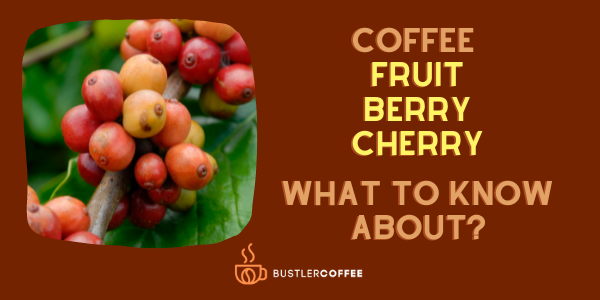You’ve heard of the saying: coffee has to be strong to be “worth it”. Some people add a lot of extra coffee beans to their coffee machine to have a “more flavored and caffeinated cup.” If you know somebody like this, contact them, and tell them they’re doing something wrong.
They are deceiving themselves! More coffee does not imply that it is better or stronger.
A good cup of coffee helps us wake up and prepare to face the challenges of everyday life with confidence. Is the flavor of your coffee off? And you’re completely unaware of the worst that has occurred to you. Before you assume there’s a problem with your coffee beans, consider the brewing process. Maybe it’s all about the right coffee to water ratio!

Contents
What is the coffee to water ratio?
The coffee to water ratio is the number of coffee grounds to the water used in brewing. Coffee to water ratio is something that will affect your beverage’s strength, mouthfeel, and more. The standard ratio is two tablespoons of ground coffee per six ounces of water.
Do you know how to calculate the ideal coffee to water ratio, or how much coffee is used in one cup? What is the proportion of ground tablespoons to cups? How much coffee is in a tablespoon?
Do you have any idea what the coffee-to-water ratio is? We’ve got you covered, don’t worry! In this article, we’ll talk about the ideal brew ratio, and how it can improve your coffee experience. Take a seat; things are about to get interesting!
Why is the coffee to water ratio so important?
You might be wondering why any of this matters. How significant are these coffee brewing ratios? Can it impact the taste of my coffee if the brewing isn’t precisely metered, even in grams? Well! The solution is straightforward. Brewing coffee is similar to preparing a cake in that the proportions of each ingredient are critical.
The intensity of the coffee’s flavor is determined by the method used to manufacture it. To make a delicious morning cup of joe, it’s critical to get the proportions right between the two ingredients. The right measurements can help you scale up and down, which has an impact on the taste and caffeine content of your coffee.
Brewing coffee is a delicate art, the perfect ratios may lead you to alter the viscosity, mouthfeel, and taste of the beverage. That’s why coffee lovers and baristas alike often use scales and timers when brewing that will allow the full flavor of coffee inherent within beans.
Let us discuss the significance of coffee measurements. Some coffee connoisseurs swear by recipes like “60 grams of coffee beans for 1 liter of water for so many cups.” This is a deceptive tactic that will alter the flavor of your coffee. Some people concentrate on ratios, which is one of the most effective techniques. It’s easy to grasp these proportions! The ratio is 1:1 if you have 1 gram of coffee and 1 gram of water. For 1g of coffee to 15 ratios of water, the ratio would be 1:15.
Coffee Golden Ratio Calculator
Curious about what is the coffee golden ratio and how it works? The coffee golden ratio calculator will help you find the perfect ground coffee for any drip coffee method with comfort!
It’s recommended to use a coffee scale for measuring your coffee. For this, we are measuring coffee by volume in tablespoons.
The golden coffee to water ratio for an automatic drip coffee would lie between 1:18 (weaker) to 1:15 (stronger), depending on how strong you prefer your coffee.
Coffee to water ratio for different brewing methods
Here’s a quick rundown of the most common brewing methods, as well as some suggested ratios to use while preparing your morning and afternoon coffee. Just keep in mind that these measurements are only guidelines. You can experiment with different ratios to find your ideal blend. Experimentation is half the joy of coffee, as we all know!
- Traditional drip brewing method
- Aeropress
- French press
- Pour-over
- Cold brew
- Chemex
- Moka pot
- V60
- Siphon
- Espresso
What grind size should I be using?
Different brew processes necessitate various grind sizes. The optimal grind size for pouring over coffee, for example, is a medium-coarse grind.
Also read : A Definitive Guide To Nespresso Pod Sizes
Traditional drip brewing method coffee to water ratio
Traditional Drip Coffee Ratio is a rough guideline for the most often used brewing method. The simplicity of “set it and forget it” provides us with coffee to confront the rigors of daily life. This traditional measuring ratio is only employed by drip brewers who fill the coffee cup with a large number of beans and water without thinking about it.
It’s also known as the golden ratio, which states that 18 grams of water should be used for every 1 gram of coffee grounds. To put it another way, let’s say you want a single 8oz cup of coffee, which will require 225ml of water.
There are some flaws with the golden cup standard; I don’t have any issues with this way of standard measurement, but I believe it is not acceptable for regular people. Most individuals will find this 1:18 to be too thin. Specifically for darker roasts and lower-cost low-altitude coffees that require a higher level of coffee intensity. Dilution with milk, which is still extremely common practice in most countries throughout the world, is not taken into account in this golden cup standard method.
Aeropress coffee to water ratio
Aeropress is another popular brewing technique for perfect coffee ratio. This method is a little more difficult in order to achieve a delectable coffee flavor. Different brew ratios, such as 1:16 to 1:4, produce the best outcomes. The 1:6 ratio appears to be the sweet spot for Aeropress. The great aspect about coffee is that the taste may be changed according to individual preferences. Experimenting with coffee grounds and water can be a great way to expand your palate.
The oval marks on the Aeropress machine are labeled with the numbers 1, 2, 3, and 4. It also features scoops, numbers that can be modified according to scoops or serving size, and labeling that serves as a guide for adding water.
If you use 1 or 3 scoops, most coffee aficionados recommend filling the machine to 1 or 3 numbers. Filling the ovals to the bottom level may result in a richer brew ideal for a Latte while filling the top level will weaken the brew and make it suitable for an Americano or Long Black.
Also read: Exploring a Classic Americano coffee
French press coffee to water ratio
Another popular brewing method that baristas like to include in their daily routine is French press coffee. Due to its small size, this technique uses an immersion method that is similar to the golden ratio but uses less water. Between 1:12 and 1:10 is the optimum recommended water to coffee ratio. People who don’t like strong coffee or who prefer a tea-like flavor should use 1:16.
Because French brewing calls for a coarse grind, there’s a lot of room between the grinds. Weight should be more precise in this scenario than any other method. You’ll be able to have a delightful cup of coffee at your table if you use the right bean or ground size measurement.
Pour over coffee to water ratio
Pour over is a beautiful and artistic style of brewing that closely resembles conventional drip brewing. For this approach, according to pour over coffee ratio calculator the best-recommended coffee grounds to water ratio is 1:17. If one wants to maintain a strong golden ratio of 1:15, Rather than coffee beans, this immersion method obtains a little more water, which is then filtered into the cup.
If you ask someone who has had French press coffee, they will tell you that it is a flavor they will never forget. If you don’t have access to a scale, use 1-2 tablespoons of coffee per 6 ounces of water. However, keep in mind that this procedure does not always produce the best results, but it should suffice in most cases.
Cold brew coffee to water ratio
The next brewing method is cold brew, which is a refreshing and back-to-summer drink that is popular among coffee drinkers. This method, unlike the Aeropress or the French press, requires a lot of coffee concentrate rather than a finished brew. The coffee water ratio for this procedure is 1:8. If you want your coffee to have a lot of caffeine, 1:5 is the ratio to use. The cold water results in a cup that is smoother and not under-extracted.
The dilution is the next step, which is equally reliant on your tasters; remember to blend it up for each cup throughout your initial batch. Instead of putting the coffee concentrate in the carafe all at once, dilute it as you drink it.
If you’re going to drink coffee with ice, dilute it at 1:2. If you don’t like ice, simply add a little more cold water. Simply adjust the dilution or brew ratio as needed after tasting the brew. On hot summer days, this coffee is a delight.
Chemex coffee to water ratio
For this brewing procedure, one rounded tablespoon of coffee per 5 oz cup should be placed in the filter cone. Most individuals like a 1:10 ratio since it is more flavorful and caffeinated. The optimal coffee to water ratio measurement for this brewing method was 1:13 to 1:17, according to many baristas.
Moka pot coffee to water ratio
This method works best with a Moka Pot machine with a 200 ml water capacity and a 1:10 ratio. This makes around 2 small cups of delicious coffee.
V60 coffee to water ratio
For one full mug, according to the v60 ratio calculator, the creator of v60 favored a 3:50 ratio, which is 15g of coffee to 250g of water.
Siphon coffee to water ratio
For this brewing method, the best-recommended coffee to water ratio is 3:50, which is the same as the v60 ratio. In simple words, a great cup of coffee requires 15-17 grams of coffee per 250 grams of water.
Espresso coffee to water ratio
The most common ratio used for espresso is 1:2. For the caffeinated flavor 1:1 and the weaker 1:4 of a lungo is a perfect match for this brewing process.
Coffee to water ratio calculator
The secret to making a wonderful cup of coffee is to get the right brew ratios. However, measuring coffee is a difficult operation, and determining how much beans, ground coffee, or water per cup is required is not straightforward. How do you convert grams to millimeters? How many cups of coffee are there? What if I’m addicted to caffeinated coffee? Is a scale required?
What do you do first thing in the morning? Fractions and ratios? You’re also perplexed by the many scales.
Thank you, but no!
It’s a mathematical hassle to convert coffee and water into scalable units. A coffee ratio calculator can help you solve this difficulty. This is a fantastic method for resolving your coffee brewing ratios and achieving a delicious flavor.
With this calculator, you may select your preferred brewing method (French Press, Aeropress, or cold brew), desired coffee strength (light, regular, or strong), and the number of cups of water to use. The absolute findings will be in grams/ml or ounces/ml. Click on this link and you can find a real-time calculator for coffee to water ratio measurement. https://goodcalculators.com/coffee-to-water-ratio-calculator/
What’s the perfect coffee-to-water ratio?
The question then becomes, what is the ideal coffee-to-water ratio? Is it possible? Well! Both yes and no.
Everything boils down to personal taste. Different civilizations require different sorts of coffee all around the world; some like subtle, some prefer cold brews, and some prefer flavorful ones.
Many individuals swear by various water weight to coffee ratios, however, it all relies on the coffee bean grounds and personal preferences. It’s critical to understand what ratio to use for the type of coffee you’re preparing. Filtering coffee at 1:20, for example, would be too weak for certain people’s palates, while at 1:10, it would be too powerful for most people’s palates.
For each bean, the proper kind of balance, according to your unique preference, would be the right balance. You’ll want to be able to pick up on all of the subtleties that drove you to purchase it in the first place.
Now you know what you know, you should be well on your way to making the perfect coffee ratio. It’s not an easy task because there are so many variables to take into consideration.
Final thoughts
Various approaches and preferences will necessitate various measurements. You’ll get the best results if you follow the path of the bean, so don’t be afraid to try new things. Hopefully, this post has shown you how important it is to have the right coffee to water ratio. Going the additional mile while making your daily coffee can yield fantastic, but more importantly, delicious outcomes that you may be overlooking. Until next time, keep brewing!
Frequently Asked Questions
What is a strong coffee to water ratio?
In drip or pour-over coffee, a weak brew would have a ratio of 1:17, while a strong brew would roughly be at a ratio of 1:15.
How much ground coffee do I use for 4 cups?
For a robust cup that will stand up to milk, use 20 oz or 40 grams of coffee in a coffee machine. It’s around 4 coffee spoons or 5.5 heaping tablespoons.
How much ground coffee do I use for 6 cups?
For a powerful cup that can stand up to milk, it’s the equivalent of 30 oz or 60 grams of coffee in a coffee machine. Approximately 6 coffee spoons or 8.5 heaping tablespoons
How much ground coffee do I use for 8 cups?
For a powerful cup that can stand up to milk, it’s the same as 40 oz or 80 grams of coffee in a coffee machine. It’s around 8 coffee spoons or 11 heaping teaspoons.
What is the ratio of coffee to water in a coffee maker?
The “golden ratio” is a basic rule of thumb that calls for one to two tablespoons of coffee per six ounces of water.
Also read: The Best Keurig Coffee Makers of 2023 – Reviewed







